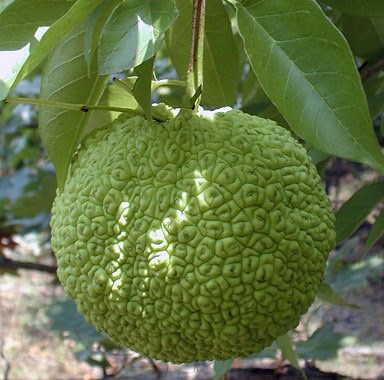Last updated: September 24, 2021
Article
Osage orange

Meriwether Lewis first documented his encounter with the Osage orange in March 1804 when he sent cuttings, which he’d obtained from Pierre Chouteau, to Thomas Jefferson from St. Louis. I send you herewith inclosed, some slips of the Osages Plums, and Apples” Lewis wrote. “I fear the season is too far advanced for their success.” Chouteau told Lewis he’d gotten the plants "at the great Osage vilage from an Indian of that nation, who said he procured them about three hundred miles west of that place."
Not widely planted in the Midwest until the mid-nineteenth century, Osage oranges belong to the Moraceae family, to which mulberries and figs also belong, and the skin of the fruit often has a pleasant, sweet, slightly citrusy smell. In fact, Lewis also wrote that Osage tribal members reported that Osage orange fruit, “give an extravigant account of the exquisite odour of this fruit when it has obtained maturity, which takes place the latter end of summer, or the begining of Autumn.” Aside from its storied smell, this tree has a long history of uses by both American Indians and pioneers.
